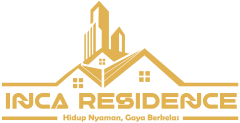Purchasing a home represents a significant milestone and typically the largest financial transaction most people will undertake. At the center of this process is the mortgage—a specialized loan designed specifically for real estate purchases. While mortgages may seem complex at first glance, understanding their fundamental components and options can empower you to make confident, informed decisions as you navigate the path to homeownership.
This guide breaks down the essential elements of mortgages, explores the various loan options available in today’s market, walks through the application process, and provides strategies for securing favorable terms. Whether you’re a first-time homebuyer or looking to refinance an existing mortgage, this information will help you approach the process with greater clarity and confidence.
The Fundamentals: What Is a Mortgage?

This arrangement provides security for the lender—if the borrower fails to make payments, the lender can take possession of the property through foreclosure to recover their investment.
Key Components of a Mortgage
Principal
The principal represents the initial amount borrowed to purchase the home. For example, if you buy a $300,000 home and make a $60,000 down payment, your mortgage principal would be $240,000. As you make payments over time, the principal balance gradually decreases.
Interest
Interest is the cost of borrowing money, expressed as a percentage rate. When you make monthly mortgage payments, a portion goes toward the principal and a portion toward interest.
Amortization
Amortization refers to the process of paying off your debt in regular installments over time. Most mortgages are fully amortizing loans, meaning they’re designed to be completely paid off by the end of the loan term through scheduled monthly payments.
Down Payment
The down payment is the initial payment you make toward the home purchase. Typically ranging from 3% to 20% of the purchase price, the down payment represents your initial equity in the property. Larger down payments generally result in better loan terms and lower monthly payments.
Loan-to-Value Ratio (LTV)
The loan-to-value ratio compares the amount of your mortgage to the appraised value of the property. For example, if you make a 20% down payment, your initial LTV would be 80%. Lenders use this ratio to assess risk—higher LTVs generally indicate higher risk and may result in less favorable loan terms or requirements for mortgage insurance.
Common Mortgage Terms
Most residential mortgages have terms of 15, 20, or 30 years. Shorter-term loans typically offer lower interest rates but higher monthly payments, while longer-term loans spread payments over more years, resulting in lower monthly obligations but higher overall interest costs over the life of the loan.
Monthly Payment Components
A typical mortgage payment consists of:
- Principal and Interest (P&I): The portion that goes toward paying down your loan balance and the cost of borrowing
- Property Taxes: Many lenders collect property taxes as part of your monthly payment, holding the funds in escrow until tax bills come due
- Homeowners Insurance: Similarly, insurance premiums are often collected monthly and held in escrow
- Mortgage Insurance: Required for certain loans with down payments less than 20%
These four components are commonly referred to as PITI (Principal, Interest, Taxes, and Insurance).
Types of Mortgages: Finding the Right Fit
Mortgages come in various forms, each with distinct features designed to meet different financial situations and goals.
Fixed-Rate Mortgages
The fixed-rate mortgage is the most traditional and straightforward option. Its key features include:
- Consistent Interest Rate: The rate remains unchanged throughout the entire loan term
- Predictable Payments: Monthly payments stay the same over the life of the loan
- Peace of Mind: Protection from market fluctuations and rising interest rates
- Common Terms: Typically available in 15, 20, and 30-year options
Best For: Homebuyers who plan to stay in their home long-term and prefer payment stability and predictability, especially in low-interest-rate environments.
Adjustable-Rate Mortgages (ARMs)
Adjustable-rate mortgages offer initial stability followed by periodic rate adjustments:
- Initial Fixed Period: Begins with a fixed rate for a specified period (commonly 3, 5, 7, or 10 years)
- Adjustment Period: After the initial period, the rate adjusts at predetermined intervals based on market indexes
- Rate Caps: Limits on how much the rate can increase per adjustment and over the loan’s lifetime
- Naming Convention: ARMs are typically named according to their structure—a 5/1 ARM has a fixed rate for 5 years, then adjusts annually
Best For: Homebuyers who plan to move or refinance before the initial fixed period ends, or those who can handle potential payment increases in exchange for lower initial rates.
Government-Backed Loans
Several loan programs are insured or guaranteed by government agencies, offering advantages for specific groups of homebuyers:
FHA Loans (Federal Housing Administration)
- Low Down Payment: Minimum down payment of 3.5% with a credit score of 580 or higher
- More Flexible Credit Requirements: May approve borrowers with lower credit scores or shorter credit histories
- Mortgage Insurance: Required regardless of down payment size, including an upfront premium and annual premiums
Best For: First-time homebuyers with limited savings for down payments or less-than-perfect credit.
VA Loans (Department of Veterans Affairs)
- No Down Payment Required: 100% financing available for eligible borrowers
- No Mortgage Insurance: Instead, there’s a one-time funding fee (which can be waived for disabled veterans)
- Competitive Interest Rates: Often lower than conventional loans
- Eligibility: Available to veterans, active-duty service members, and some surviving spouses
Best For: Eligible military service members, veterans, and their families.
USDA Loans (Department of Agriculture)
- No Down Payment Required: 100% financing available for eligible properties
- Geographic Restrictions: Property must be located in a USDA-designated rural area
- Income Limits: Borrowers must meet income eligibility requirements
- Guarantee Fee: Lower than FHA mortgage insurance
Best For: Moderate-income homebuyers looking to purchase in eligible rural areas.
Conventional Loans
Conventional loans are not backed by government agencies and come in two main varieties:
Conforming Loans
- Meet Guidelines: Conform to standards set by Fannie Mae and Freddie Mac
- Loan Limits: Subject to maximum loan amounts that vary by location
- Down Payment: Typically require at least 3-5% down
- Private Mortgage Insurance (PMI): Required with down payments less than 20%, but can be removed when equity reaches 20%
Non-Conforming (Jumbo) Loans
- Exceed Limits: Loan amounts above the conforming loan limits
- Stricter Requirements: Typically require excellent credit, larger down payments, and lower debt-to-income ratios
- Higher Interest Rates: Often carry slightly higher rates than conforming loans
Best For: Borrowers with good credit and stable income who can make moderate down payments, or high-income borrowers purchasing more expensive properties.
Specialized Mortgage Products
Several other mortgage types exist for specific situations:
Interest-Only Mortgages
- Allow payment of only interest for an initial period
- Monthly payments increase substantially when principal payments begin
- Less common since the 2008 financial crisis
Balloon Mortgages
- Feature lower monthly payments followed by a large “balloon” payment
- Require refinancing or full payment at the end of a short term (often 5-7 years)
Reverse Mortgages
- Available to homeowners aged 62 or older
- Convert home equity into loan proceeds without monthly mortgage payments
- Repayment required when the borrower moves, sells the home, or passes away
The Mortgage Process: From Application to Closing
Securing a mortgage involves several steps, typically spanning 30-45 days from application to closing.
Step 1: Prepare Your Finances
Before applying for a mortgage, take time to strengthen your financial position:
- Check Your Credit: Review your credit reports for errors and work to improve your score
- Save for Down Payment and Closing Costs: Aim for at least 3-20% of your target home price, plus 2-5% for closing costs
- Reduce Debt: Pay down existing debts to improve your debt-to-income ratio
- Gather Financial Documents: Prepare recent pay stubs, W-2s, tax returns, bank statements, and asset information
Step 2: Get Pre-Approved
Mortgage pre-approval provides a clear picture of what you can afford and demonstrates to sellers that you’re a serious buyer:
- Submit financial information to a lender for review
- The lender verifies your income, assets, and credit
- Receive a pre-approval letter specifying how much you can borrow
- Pre-approvals typically last 60-90 days
Step 3: Shop for Lenders
Different lenders offer varying rates and terms, so it’s worthwhile to compare options:
- Banks: Traditional financial institutions offering various mortgage products
- Credit Unions: Member-owned institutions that may offer favorable rates to members
- Mortgage Brokers: Intermediaries who work with multiple lenders to find competitive offers
- Online Lenders: Digital platforms that may offer streamlined processes and competitive rates
When comparing lenders, look beyond the interest rate to consider:
- Origination fees and other closing costs
- Down payment requirements
- Quality of customer service
- Timeframe for closing
Step 4: Submit Your Mortgage Application
Once you’ve selected a lender and found a home, you’ll complete a full mortgage application:
- Formal Application: Complete the Uniform Residential Loan Application (Form 1003)
- Documentation Submission: Provide all required financial documents
- Property Information: Include details about the home you’re purchasing
- Loan Estimate: Receive a standardized form outlining the loan terms, projected payments, and closing costs within three business days
Step 5: Underwriting
During underwriting, the lender thoroughly evaluates your application:
- Credit Analysis: Detailed review of your credit history and score
- Income Verification: Confirmation of employment and income stability
- Asset Assessment: Verification of down payment funds and reserves
- Property Appraisal: Professional evaluation to ensure the home’s value supports the loan amount
- Title Search: Examination of property records to ensure clear ownership
This process may involve requests for additional documentation or explanations for items in your financial history.
Step 6: Loan Approval and Closing Preparation
Once approved, you’ll receive:
- Commitment Letter: Formal approval of your mortgage
- Closing Disclosure: Detailed breakdown of final loan terms and closing costs (provided at least three business days before closing)
- Closing Instructions: Information about what to bring to closing and any remaining conditions to satisfy
Step 7: Closing
At closing, you’ll:
- Sign Documents: Execute the mortgage note, deed of trust, and various disclosures
- Pay Closing Costs: Provide funds for down payment and closing costs
- Receive Keys: Take possession of your new home once the transaction is complete
Key Mortgage Terms and Concepts
Understanding mortgage terminology can help you navigate the process more confidently:
Interest Rate vs. Annual Percentage Rate (APR)
- Interest Rate: The basic rate charged on your loan amount
- APR: A broader measure that includes the interest rate plus certain closing costs, providing a more comprehensive view of the loan’s cost
Points and Credits
- Discount Points: Upfront fees paid to reduce the interest rate (one point equals 1% of the loan amount)
- Lender Credits: Offered by lenders to offset closing costs in exchange for a higher interest rate
Private Mortgage Insurance (PMI)
- Required for conventional loans with down payments less than 20%
- Protects the lender if you default on the loan
- Can be removed when you reach 20% equity (automatically terminated at 22% for most loans)
- Typically costs 0.5% to 1% of the loan amount annually
Escrow Accounts
- Accounts managed by your lender or servicer to pay property taxes and insurance
- Funds are collected as part of your monthly mortgage payment
- Helps ensure these critical expenses are paid on time
- Subject to annual analysis and adjustments if tax or insurance costs change
Strategies for Securing a Favorable Mortgage
Consider these approaches to improve your mortgage terms:
Improve Your Credit Score
- Pay Bills on Time: Payment history is the most significant factor in your credit score
- Reduce Credit Card Balances: Aim to use less than 30% of available credit
- Avoid New Credit Applications: Minimize hard inquiries before applying for a mortgage
- Review Credit Reports: Dispute any errors you find
Save for a Larger Down Payment
- 20% Down: Eliminates the need for mortgage insurance
- Lower LTV: Results in better interest rates and lower monthly payments
- Increased Buying Power: May qualify you for a larger loan
Consider Different Loan Terms
- 15-Year vs. 30-Year: Shorter terms have lower interest rates but higher monthly payments
- ARM vs. Fixed: ARMs may offer savings if you plan to move or refinance within the initial fixed period
- Paying Points: May be worthwhile if you plan to keep the loan for many years
Time Your Purchase Strategically
- Monitor Interest Rate Trends: Rates vary based on economic conditions and Fed policy
- Seasonal Considerations: Home prices may be more negotiable during slower seasons
- Market Conditions: Consider whether you’re in a buyer’s or seller’s market
Refinancing: When and Why to Consider It
Refinancing involves replacing your current mortgage with a new one, potentially offering several benefits:
Common Reasons to Refinance
- Lower Interest Rate: Reducing your rate can save thousands over the loan term
- Shorter Loan Term: Moving from a 30-year to a 15-year loan can save substantial interest
- Switch Loan Types: Converting from an ARM to a fixed-rate loan for greater stability
- Cash-Out Refinance: Accessing home equity for major expenses or debt consolidation
- Removing PMI: Refinancing when you’ve built sufficient equity to eliminate mortgage insurance
When Refinancing Makes Sense
Consider refinancing when:
- Interest rates have dropped significantly below your current rate
- Your credit score has improved substantially since your original mortgage
- You plan to stay in your home long enough to recoup closing costs
- You want to change loan terms or types to better align with your financial goals
Break-Even Analysis
Calculate how long it will take to recover the costs of refinancing:
- Total Closing Costs ÷ Monthly Savings = Break-Even Point in Months
For example, if refinancing costs $4,000 and saves $200 monthly, you’d break even in 20 months.
Common Mortgage Challenges and Solutions
Low Credit Score
- Solution: Work to improve your score before applying, or consider FHA loans which have more flexible credit requirements
Limited Down Payment
- Solution: Explore down payment assistance programs, government-backed loans with lower down payment requirements, or gifts from family members
High Debt-to-Income Ratio
- Solution: Pay down existing debts, increase income, or consider a co-borrower
Self-Employment Income
- Solution: Prepare additional documentation showing stable income, including at least two years of tax returns and financial statements
Previous Bankruptcy or Foreclosure
- Solution: Rebuild credit during the waiting period required by different loan programs (typically 2-7 years depending on the situation and loan type)
Special Considerations for First-Time Homebuyers
First-time buyers have access to several advantages:
First-Time Homebuyer Programs
- Down Payment Assistance: Grants or low-interest loans to help with down payments
- Tax Credits: Some states offer mortgage credit certificates that reduce tax liability
- Special Loan Programs: Many lenders offer products specifically designed for first-time buyers
Educational Resources
- Homebuyer Education Courses: Often required for certain programs and provide valuable information
- Housing Counseling: HUD-approved counselors offer guidance throughout the buying process
Financial Planning
- Emergency Fund: Maintain savings for unexpected home repairs and other emergencies
- Budget for Homeownership: Account for maintenance, utilities, and other costs beyond your mortgage payment
Conclusion: Empowered Homebuying
Understanding mortgages empowers you to make one of life’s most significant financial decisions with confidence. By familiarizing yourself with the types of loans available, the application process, and strategies for securing favorable terms, you’re better positioned to find a mortgage that aligns with your financial situation and homeownership goals.
Remember that while buying a home is a major commitment, it also represents an opportunity to build equity, create stability, and potentially benefit from appreciation over time. Take your time, do your research, ask questions, and work with trusted professionals to navigate the path to homeownership successfully.
Whether you’re purchasing your first home or your fifth, the right mortgage can make all the difference in your long-term financial well-being and satisfaction with your investment.




